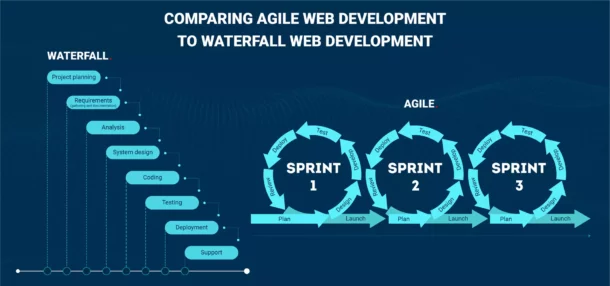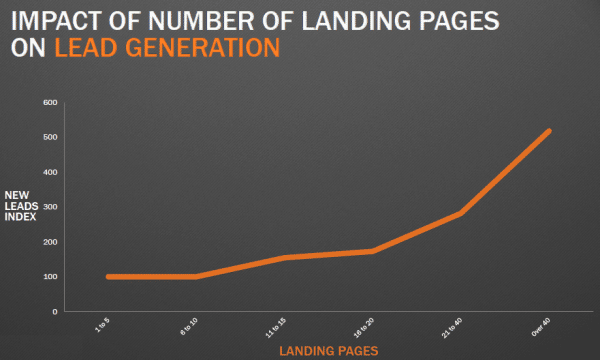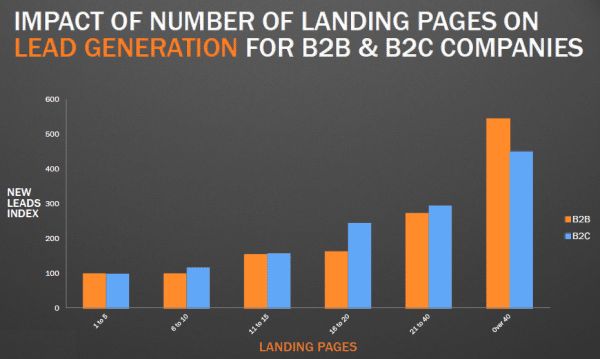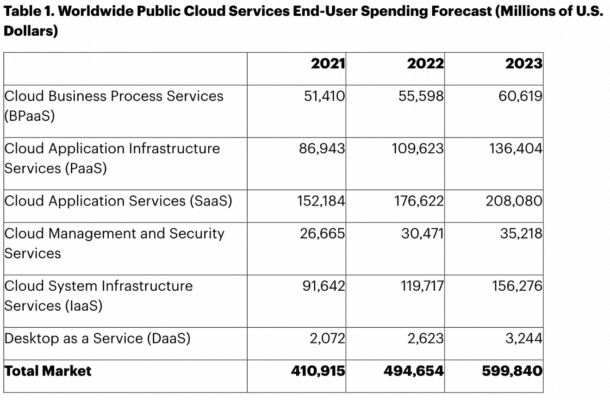Your site is the hub of your customer acquisition and, no matter what results you are achieving today, there is always room for optimization and improved user experience. Regular analysis of and updates to your website allows your SaaS company to stay relevant and focused in a competitive market.
Website design is an important factor in how well B2B SaaS companies engage their target audience. Proper website design should consider a variety of factors such as usability, trustworthiness, and design elements that will effectively communicate the company’s core message. By taking into account user experience on a consistent basis, businesses can improve the overall visitors’ satisfaction and reduce bounce rates.
In this article, we’ll show you why refreshing your website often with an agile, iterative process will contribute to more successful conversion results for your SaaS business.
Check Out SaaS websites we have redesigned.
SaaS Website Redesign & Agile Web Development
Let’s explore website redesign versus an agile web process and which one is best for your SaaS digital strategy to reach your target audience.
A SaaS Website Redesign versus Agile Web Process
A redesign is a total overhaul of a website’s content, framework, and design; starting from scratch to redo all aspects or most aspects of a website. The process of redesigning is also known as waterfall development because it takes a step-by-step, start-to-finish approach. A full website redesign uses this strategy.
Agile web is a more consistent approach where you evaluate your website’s conversion success from a specific section of your site on a consistent basis, redesigning these specific sections in the process. When taking this approach, you create iteratively through a short sprint cycle for each section as opposed to the start-to-finish waterfall approach. These agile sprints typically occur on a monthly cadence but the length of each sprint can be determined by what works best for your team and its goals.
Here is a graphic that does a great job breaking down how the steps of a waterfall development process compares to an agile one:

(source)
In today’s SaaS market, an agile web process is ideal so that you can iteratively improve the conversions and results of the site. This process allows your business to be highly strategic and very targeted to your specific audience while achieving quicker results through a series of sprints that all contain the same steps of testing and designing.
However, we all understand those moments of burning it to the ground, and sometimes your website needs more of an entire overhaul. In this next section, we’ll outline which web development strategy is right for your business.
When a Redesign Can Improve SaaS Website Conversion
Redesign is often considered when the foundation of the website is not at the level it needs to be from either a brand identity, marketing, or sales perspective.
While many digital strategies can feel complex, deciding it is time for a redesign is pretty simple.
Here are some reasons to look at a total redesign:
- Your content management system is dated or unusable.
- The overall brand and look across the site is outdated.
- Your SaaS product has significantly changed or is launching a total pivot.
- You are adding additional brands or products to your suite of offerings.
This is a bigger and more complex project, but may be required if the foundation you want to build upon is broken. Redesigning allows you to create fundamental process changes to the customer journey
In general, this strategy has you starting from a blank slate to re-evaluate the user experience, design, content, technology, wireframe, and backend from the ground up utilizing the waterfall-style methodology.
When SaaS Companies Can Use Agile Web Development for Optimum Results
If your site has a strong foundation where your core brand is up-to-date and the content management system is well built, agile web is a smart and strategic solution for improved outcomes.
Learn more about agile web development.
In most cases, even once you build a new website or redesign a website, you should then begin an agile website, sprinted redesign process to consistently deliver results for your SaaS offering.
“When we perform at our best, we look almost like during our smallest start-up days, moving quickly, iterating with customers in real time, proving out new business models in a very rapid and agile way.” — Aaron Levie, co-founder & CEO, Box
Using Agile Process Sprint Planning for SaaS Digital Strategy
Another important element of the agile process is bringing in members from other teams to be a part of the sprint process. This cross-functional approach ensures that your digital strategy leverages the experts on your team, letting you look at your website from multiple perspectives that one team or person may not come up with on their own. When bringing more team members into a project, using the agile project planning process of sprints helps make sure you are using your teams’ time efficiently while still keeping your website relevant through continual evaluation.
Sprint planning for your website refreshes allows you to make tactical design choices from the following perspectives:
- Creating SMART, measurable goals so each iteration of the site can be built upon a stable foundation
- Using data-driven analytics for your content
- Assessing the health of your business regularly and in a focused manner
- Developing growth targets that can be reevaluated within each Sprint
Setting month-long sprints that analyze a key page or section lets you achieve increased results for your SaaS business strategy. This process also encourages you to keep a constant eye on important growth metrics (churn, organic growth, website traffic, etc.).
We have seen why an agile process is best for keeping your SaaS website fresh, so let’s dive into why websites are critical for software companies’ digital strategies no matter the tactic.
Why SaaS Websites Matter for Conversion
The Best SaaS Websites According to Marketer Milk
The Nucleus of your Software Company’s Digital Marketing Strategy
Algorithms change daily, across all platforms, without warning. While this is a universal truth in the digital space, it also needs to be a key motivator for your web strategy. Your company establishes credibility, thought leadership, and SQLs (to name a few) through its website; so, it is crucial for your business to continually focus on optimizing your SERP placement.
Staying on top of algorithm changes ensures your website is getting in front of potential customers, but overhauling your site every time there is a trend shift will wreak havoc on your SEO and content foundations. Rather than making major updates to every page in one fell swoop, approaching this from an agile process lets you hone in on smaller changes that can make a bigger impact. The adaptability of an iterative website design process allows you to obtain the strongest ROI from what feels like the Wild, Wild, Web: an exciting landscape shifting by the minute.
Your website is a key channel for customer growth and acquisitio n; so, your content needs to drive traffic to your site in a way that feels relevant while properly explaining your product and pricing.
Beyond that, turning visitors into PQLs and SQLs is a central tactic for any SaaS company’s marketing funnel. Whether you are executing ad campaigns, SaaS seo, affiliate programs, or any other awareness tactics, all marketing channels will drive back to your website.
Websites as Conversion-drivers in a Product-focused Strategy for Software
As a lower barrier entry point, you want your website to help you convert a higher percentage of visitors into paying customers. For B2B SaaS sales, companies look to drive trials and freemium accounts as their central conversion tactic, making it essential to streamline and shorten the validation stage through a clean, easy-to-navigate website.
Another important focus in this tactic is to evaluate the number of valuable landing pages you have, as these contribute to increased conversion.
B2B companies saw a 55% increase in conversion rate when having 10-15 landing pages than those companies with 1-5 pages.

While creating extra landing pages is a quantitative move, those pages need to be qualitatively strategized to make an impact in the SaaS market.
Yes, increased landing pages offer more opportunities to bring in new customers; but if those pages don’t contain valuable content, how far will those prospective customers travel through your sales funnel?

Not taking the time to optimize the content on new landing pages is the business comparison of “throwing sh*t at the wall to see what sticks.” Is something getting out there? Yes. Is it a giant waste of resources and employee bandwidth to create or redo landing pages with no foresight? Absolutely.
Take advantage of these pages by utilizing a strong keyword strategy for SEO optimization. After determining the keywords you want to focus on for rank, navigate how that can be woven into content that solves your customers’ problems. Driving PQLs to customer-centric content demonstrates your industry expertise while acting as your first reference for the job; it gives them a taste of your capabilities and creates more SQLs for your SaaS business.
Data-Driven Strategies for Improving Conversion
Looking to optimize that conversion rate even more? An agile web development strategy lets you prioritize data, content, and design to deliver stronger, quicker results.
How an Agile Methodology Improves Time Management
Using a cyclical, agile approach to website refreshes gives your team more available time to create content that provides an impactful experience for PQLs.
“The first 20 years of the web were won by those that built the best infrastructure. Now it’s won by those that build the best experiences.” — Aaron Levie, co-founder & CEO, Box
How to Take an Iterative Approach in Web Design.
This experience-driven customer journey is crucial for SaaS websites.
Leverage more landing pages to offer visitors a look at your product, emphasizing how it will solve their needs and make their lives easier. Provide a transparent perspective of the look and feel of your offering.
If your company wants to increase landing pages as a strategy to improve lead gen from your website, you must take an iterative approach to creating landing pages.
Make sure these pages:
- Are always relevant to your current customers’ needs
- Have up-to-date statistics/insights
- Maintain a consistent look and feel to the rest of your site
- Leverage adaptable strategies to overcome the algorithm
Focus on Your Website Strategy to See Sales-led SaaS Growth

Data shows that SaaS market share is continually increasing year-over-year. As more products enter the landscape, software companies need to leverage their web presence to combat the saturated market. Your website is the apex opportunity to bring customers in, so approach digital strategies in the way you would a personal relationship vs an objective sales tool.
When taking a sales-oriented approach to SaaS strategy, expect a longer conversion timeline (according to HubSpot, about 84 days to be exact – but who’s counting?!). A main reason for this is that software products requiring more customization, personalization, or ones that have a more complex purchase process need to drive traffic to convert demos or other consultative opportunities into SQLs. This can be a timely but necessary process that is similar to dating or making a new friend.
Let’s think about that relationship comparison in more detail. When starting a new partnership:
-
- You don’t want to come off as overbearing or switch your personality during every interaction.
-
- However, you also don’t want to seem so laid back or passive that you’re uninterested.
-
- Instead, you want to find that supportive middleground; showing the best parts of you in an open, welcoming way that feels caring and conscientious.
To find the most qualified sales leads, make sure your website lives in that middleground sweet spot, acting as a conduit to spark engagement and inspire customers to learn more while letting your brand persona consistently shine. As in any relationship, you need to nurture your website – and the leads it brings to the table – in an ongoing fashion to see optimum ROI in the form of qualified conversions.
In a sales-driven approach for your SaaS company, create website content that provides a clear view of the product you offer and the problems it solves. Some key examples are testimonials, readily-available product tours, and a transparent pricing page. You can have the flashiest site, but if your pricing is not available leads are less likely to convert.
Designing SaaS Pricing Pages That Convert
With an average industry conversion rate of 3-7% (source), your website is your greatest asset , so we suggest giving it the same TLC you would to a friend.
Which friendships are the most successful? The ones where you touch base every couple years or the ones where you continually check in, even if it is just a phone call or short interaction.
This latter approach is what agile web process is all about: continually checking in with the quality of your site and making digestible changes to ensure a fresh, welcoming, data-driven customer experience that feels relevant.
Written by: Tony Zayas, Chief Revenue Officer
In my role as Chief Revenue Officer at Insivia, I am at the forefront of driving transformation and results for SaaS and technology companies. I lead strategic marketing and business development initiatives, helping businesses overcome plateaus and achieve significant growth. My journey has led me to collaborate with leading businesses and apply my knowledge to revolutionize industries.
